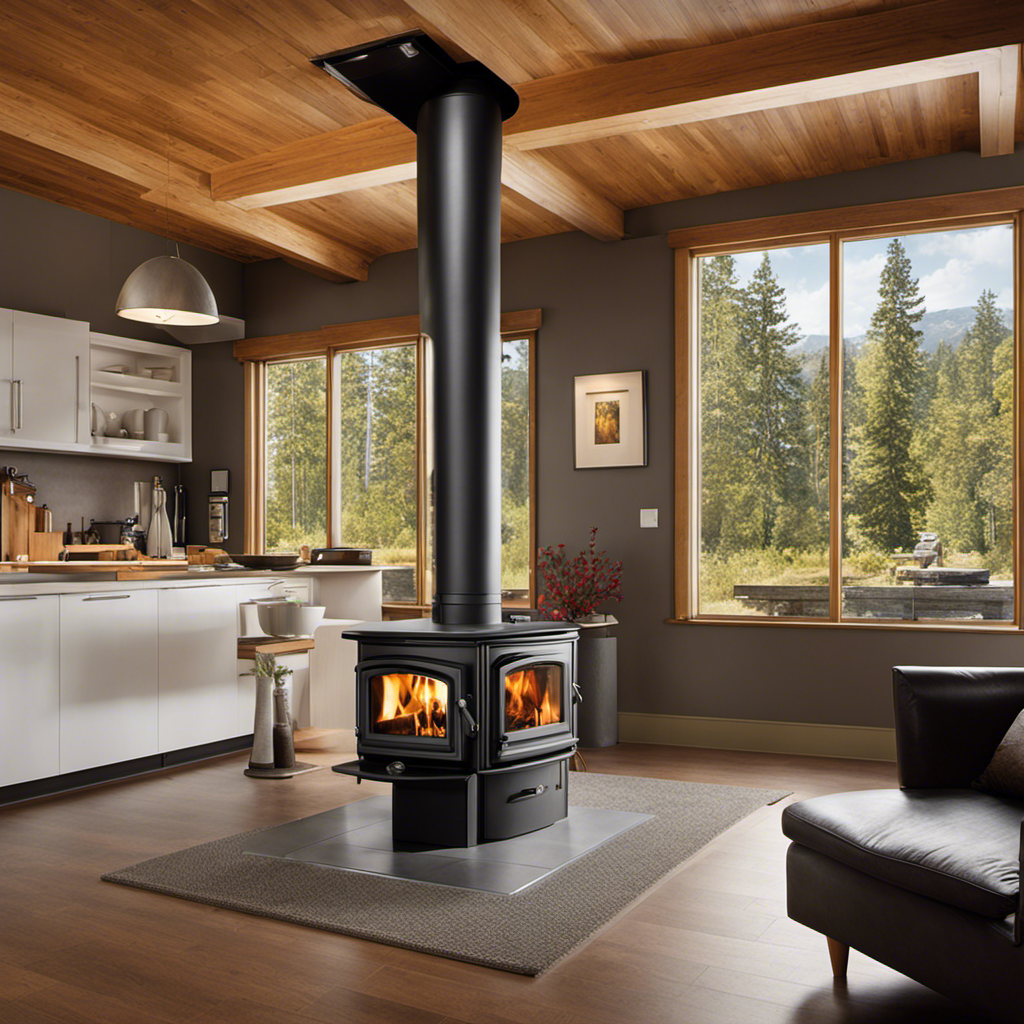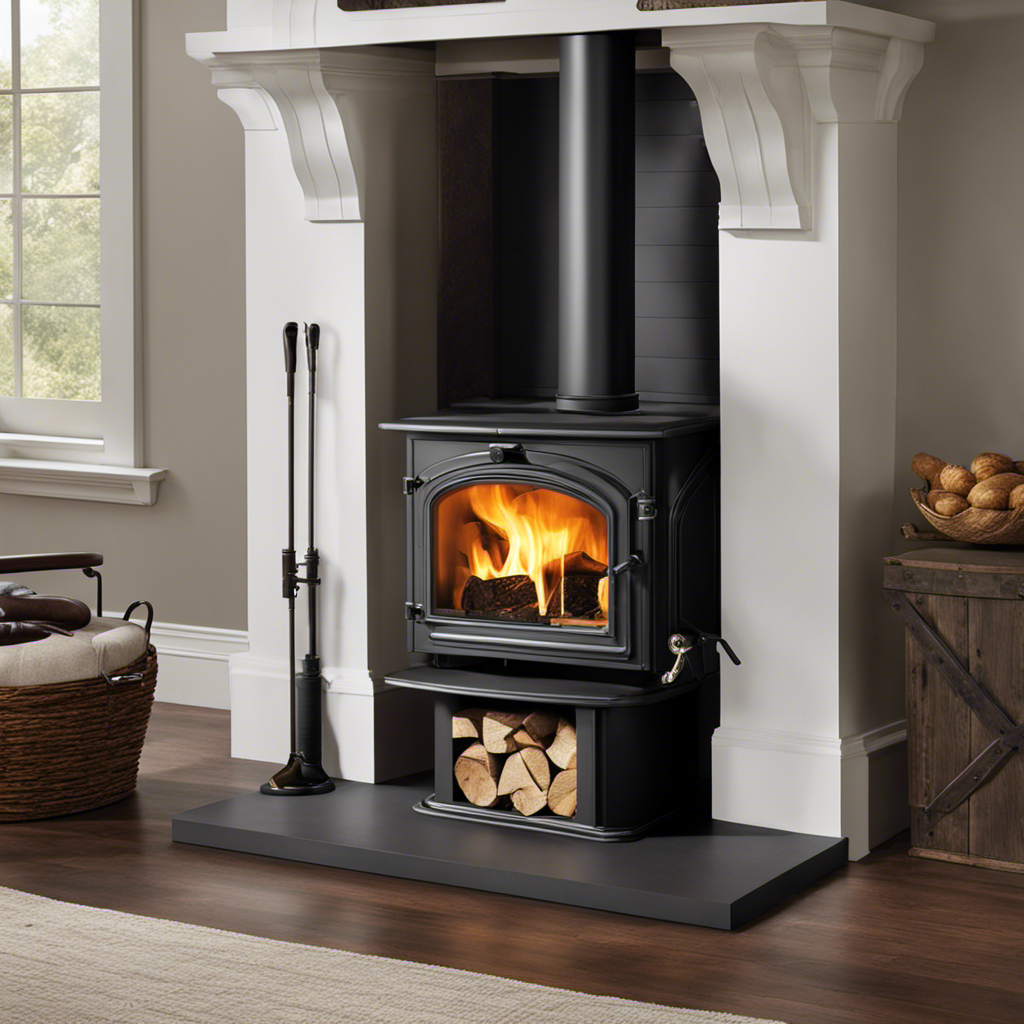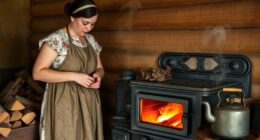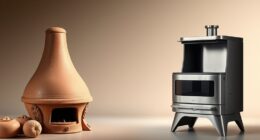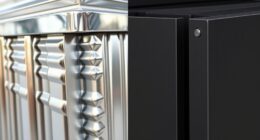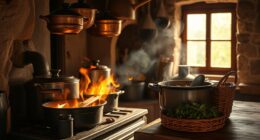
I have always been curious about the temperature the surface of a wood stove can reach. Let me tell you, it can get hotter than you would imagine!
In this article, we’re going to dive into the science behind wood stove heat and explore the factors that can affect the temperature on the outside.
We’ll also discuss how to measure the heat and share some safety precautions and tips for managing and controlling the external heat.
So, let’s get started and unravel the mysteries of wood stove temperatures!
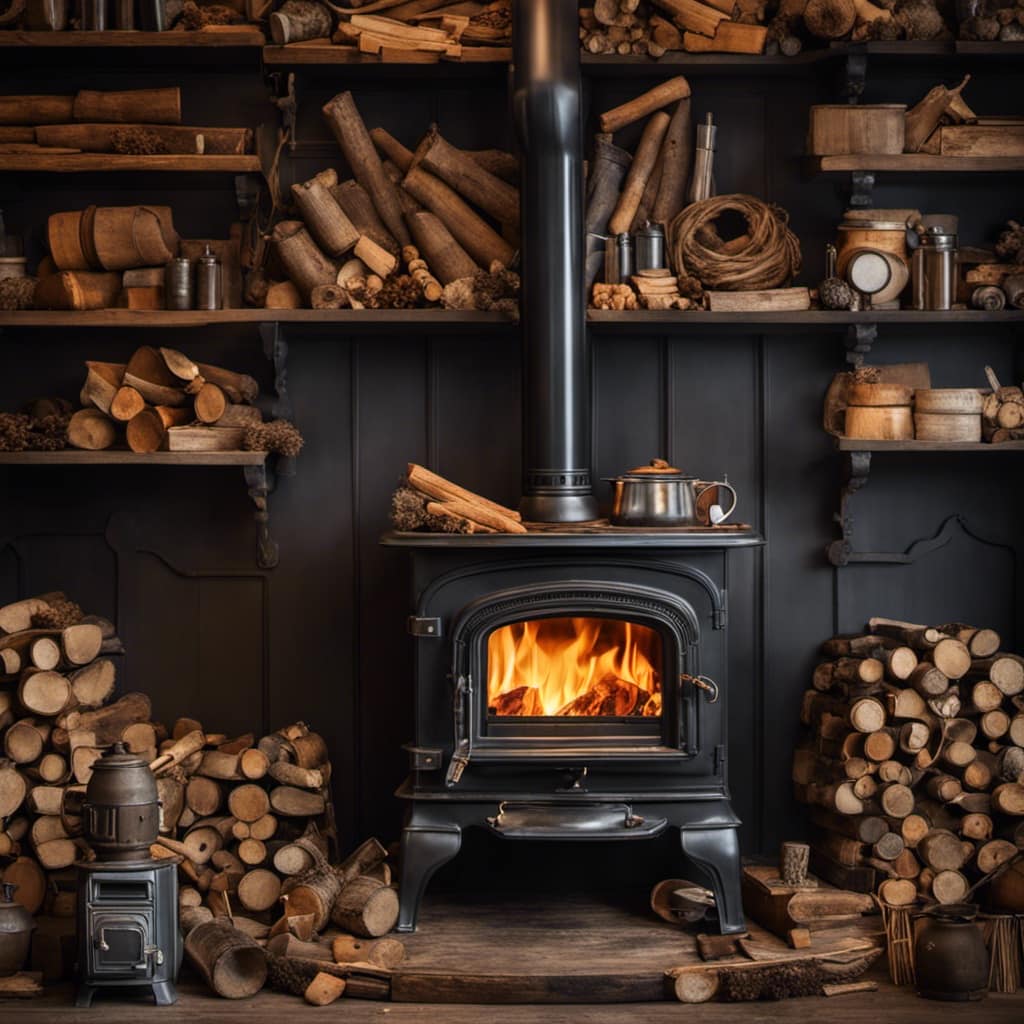
Key Takeaways
- The heat from a wood stove is transferred through conduction, convection, and radiation.
- The materials of the wood stove and the insulation surrounding it affect the external temperature.
- Measuring the heat accurately can be done using digital thermometers, infrared thermometers, thermocouples, and temperature sensors.
- Safety precautions, such as using heat-resistant materials and maintaining a safe distance from flammable objects, should be taken when dealing with hot wood stove surfaces.
The Science Behind Wood Stove Heat
I can feel the intense heat radiating from the outside of a wood stove. Understanding the science behind wood stove heat involves delving into the mechanisms of heat transfer and the role of thermal insulation materials.
Heat transfer occurs through three main mechanisms: conduction, convection, and radiation. Conduction refers to the transfer of heat through direct contact between objects, while convection involves the movement of heat through fluids or gases. Radiation, on the other hand, is the transfer of heat through electromagnetic waves.
Thermal insulation materials play a crucial role in minimizing heat loss from the wood stove. These materials, such as fire bricks or ceramic insulation, have low thermal conductivity, which helps trap the heat inside the stove.
As we explore the factors affecting external wood stove temperature, we’ll see how these mechanisms and materials contribute to the overall heat distribution.
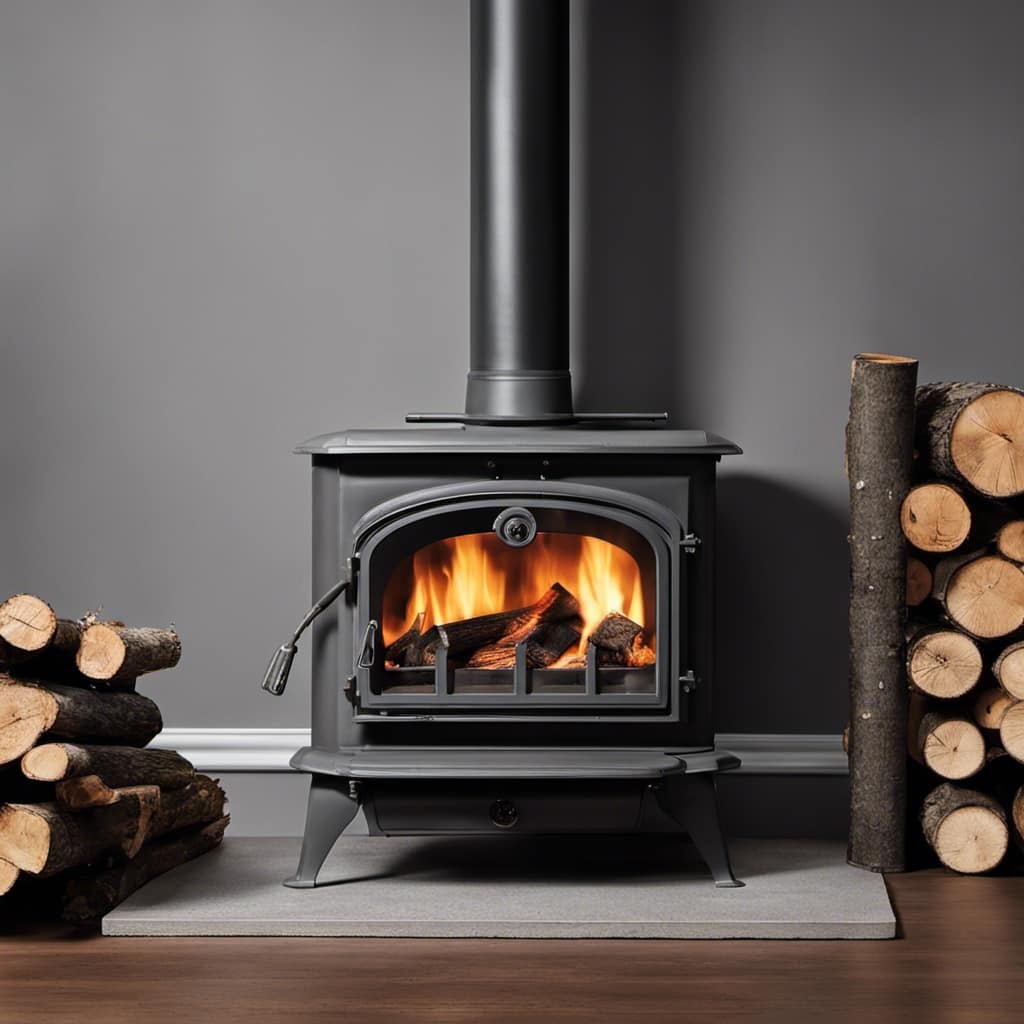
Factors Affecting External Wood Stove Temperature
Based on my observations, the external temperature of a wood stove can be influenced by various factors. These factors include:
-
Wood stove materials: The type of materials used in the construction of the wood stove can impact its external temperature. Different materials have different thermal conductivity, which affects how much heat is transferred to the outer surface.
-
Impact of weather: Weather conditions, such as ambient temperature and humidity, can affect how hot the outside of a wood stove gets. Cold weather can cause the stove to become hotter, while high humidity can reduce the rate of heat transfer.
-
Insulation: The insulation surrounding the wood stove can play a role in determining its external temperature. Proper insulation helps to retain heat within the stove, preventing excessive heat transfer to the outer surface.
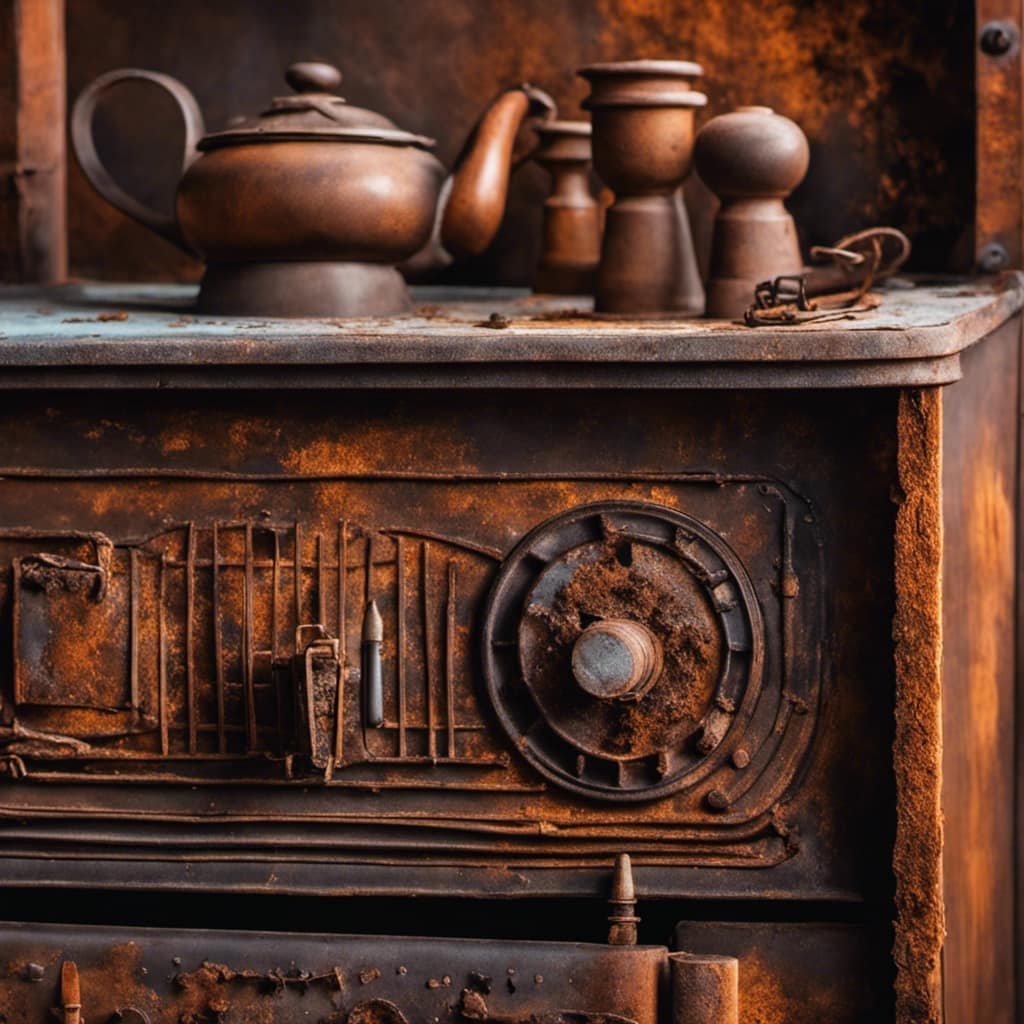
Understanding the factors that affect the external temperature of a wood stove is essential when measuring the heat.
Now, let’s move on to the next section and explore how we can measure the temperature ranges accurately.
Measuring the Heat: Understanding Temperature Ranges
To accurately measure temperature ranges, I use a digital thermometer that provides precise readings. Measuring the heat distribution on the outside of a wood stove is important for understanding how hot it gets and ensuring safety. There are several measuring techniques that can be used to determine the temperature range. One common method is using an infrared thermometer, which measures the surface temperature without direct contact. Another technique is using a thermocouple, which can be inserted into the stove to measure the internal temperature. Additionally, heat distribution can be analyzed by placing temperature sensors at different locations on the stove and recording the readings. By utilizing these measuring techniques, we can gather valuable data on the temperature ranges and heat distribution of wood stoves, allowing for better understanding and control of their performance.
| Measuring Technique | Advantages | Disadvantages |
|---|---|---|
| Infrared Thermometer | Non-contact measurement | Limited accuracy for high temperatures |
| Thermocouple | Accurate internal readings | Requires insertion into the stove |
| Temperature Sensors | Provides data on heat distribution | Limited number of sensors can be used |
Safety Precautions for Hot Wood Stove Surfaces
When using a wood stove, it’s important to take safety precautions to prevent accidental burns from the heated surfaces. Here are three key measures you can take to ensure your safety:
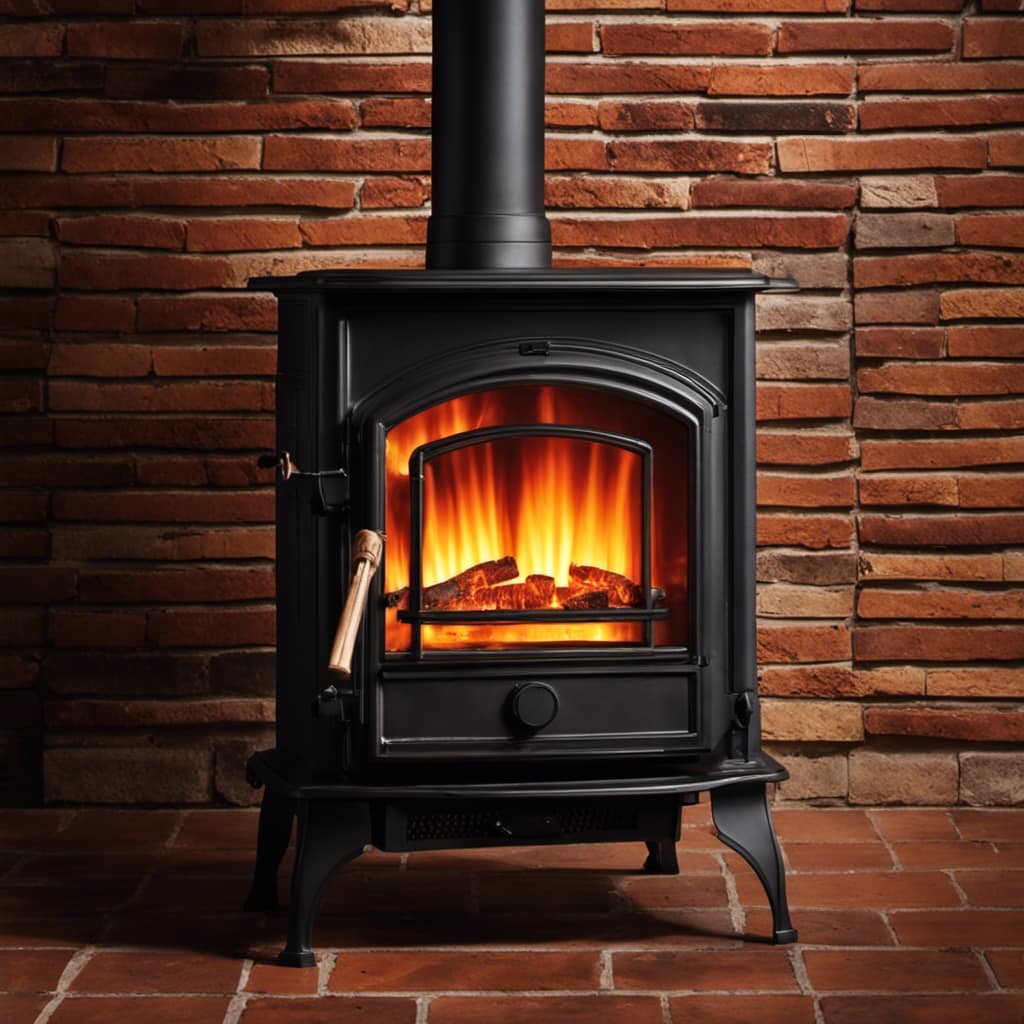
-
Use heat resistant materials: Make sure the surrounding area of your wood stove is constructed with materials that can withstand high temperatures. This includes the flooring, walls, and any nearby furniture.
-
Maintain a safe distance: Keep flammable objects at a safe distance from the stove to prevent them from catching fire. It’s recommended to have a clearance of at least three feet around the stove.
-
Install protective barriers: Consider installing heat shields or barriers around the stove to prevent accidental contact with hot surfaces. These barriers can help redirect heat away from vulnerable areas and reduce the risk of burns.
Tips for Managing and Controlling External Wood Stove Heat
I find it helpful to adjust the airflow to control the temperature of my wood stove. Proper management of heat distribution is crucial to protect surrounding surfaces and ensure the safe operation of the stove.
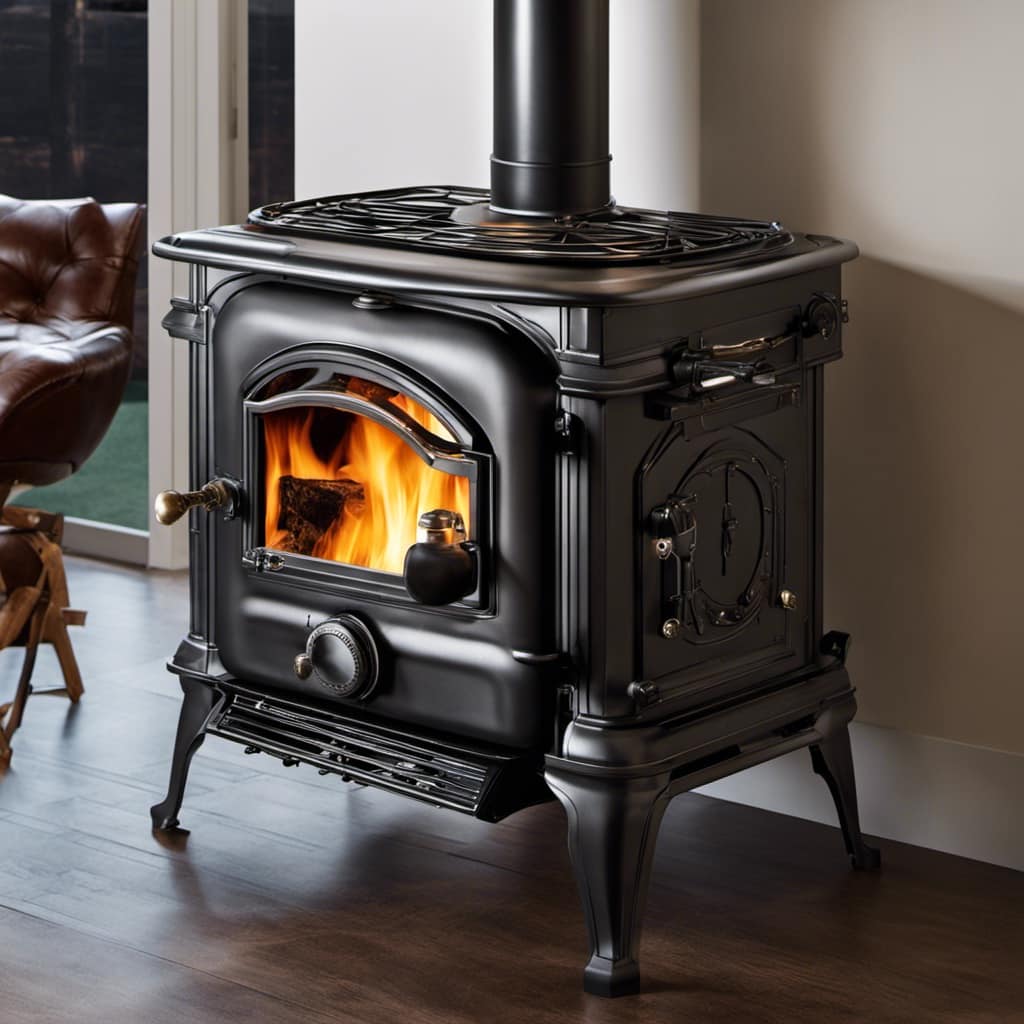
One method I use is to regulate the air intake and damper settings. By adjusting the airflow, I can control the combustion rate and subsequently the heat output of the stove. This allows me to maintain a comfortable temperature in the room while preventing the stove from getting too hot.
Additionally, I make sure to place a heat-resistant barrier around the stove to protect nearby walls and furniture. This can be in the form of a heat shield or a non-combustible material such as ceramic tiles.
Frequently Asked Questions
Can the Outside of a Wood Stove Get Hot Enough to Cause Burns or Injuries?
The outside of a wood stove can get hot enough to cause burns or injuries. To safely operate a wood stove and prevent burns, follow these tips: use heat-resistant gloves, keep children and pets away, and install a heat shield.
What Materials Are Typically Used to Insulate the Exterior of a Wood Stove and Prevent Excessive Heat Transfer?
When it comes to insulating the exterior of a wood stove, various materials are used to keep the heat in check. These types of insulation not only prevent excessive heat transfer, but also enhance safety and efficiency.
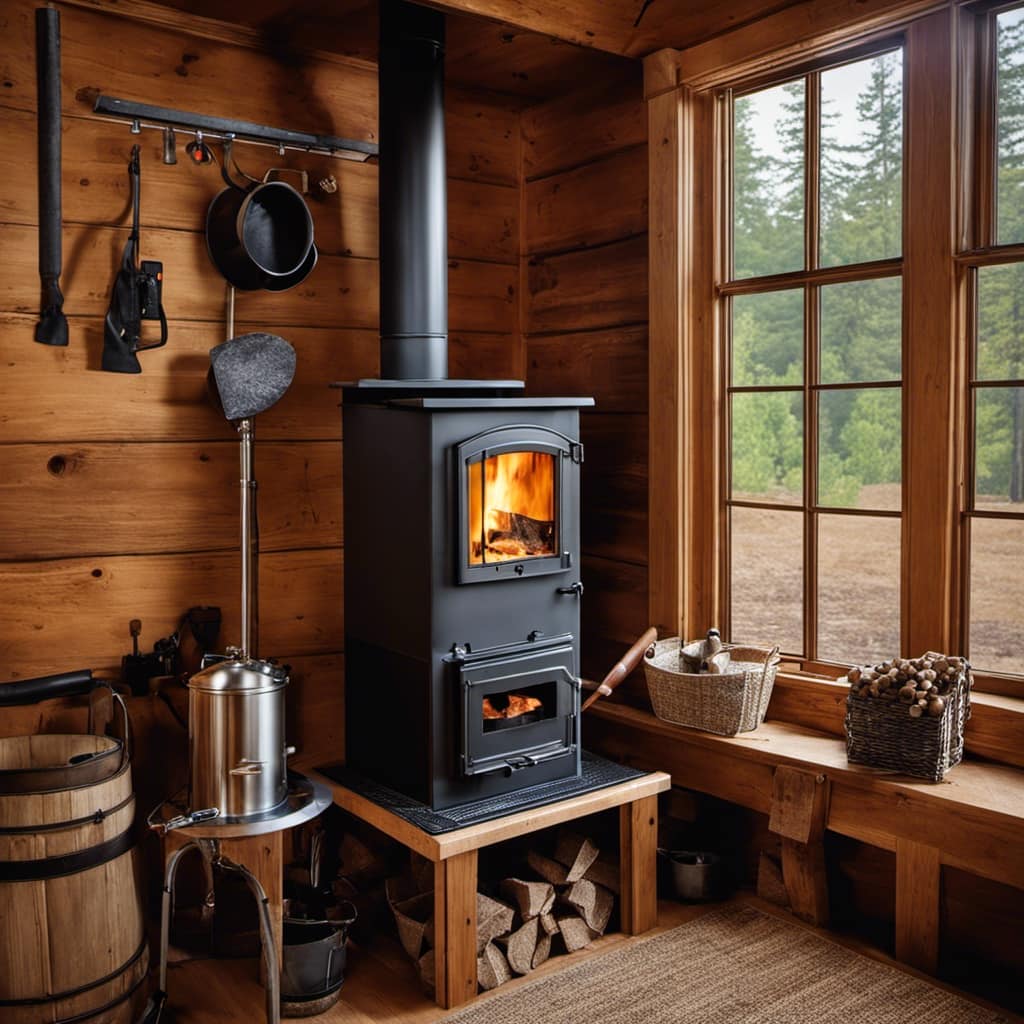
How Long Does It Take for the Outside of a Wood Stove to Cool Down After It Has Been in Use?
It’s important to consider the cooling time of a wood stove after use. The heat insulation materials used on the exterior can affect how long it takes for the stove to cool down.
Are There Any Regulations or Guidelines for the Maximum Allowable Temperature of the Exterior of a Wood Stove?
There are regulations and guidelines in place to determine the maximum allowable temperature of the exterior of a wood stove. These standards ensure safety and prevent overheating, protecting both the stove and surrounding area.
Can the External Temperature of a Wood Stove Be Influenced by the Type of Fuel Being Burned, Such as Hardwood Versus Softwood?
When it comes to the performance of a wood stove, the type of wood being burned can have an impact. Hardwood tends to burn longer and hotter, which can increase the external temperature.
Conclusion
In conclusion, the outside of a wood stove can reach temperatures of up to 500 degrees Fahrenheit (260 degrees Celsius), depending on factors such as the type of wood, the stove’s design, and how well it’s insulated.
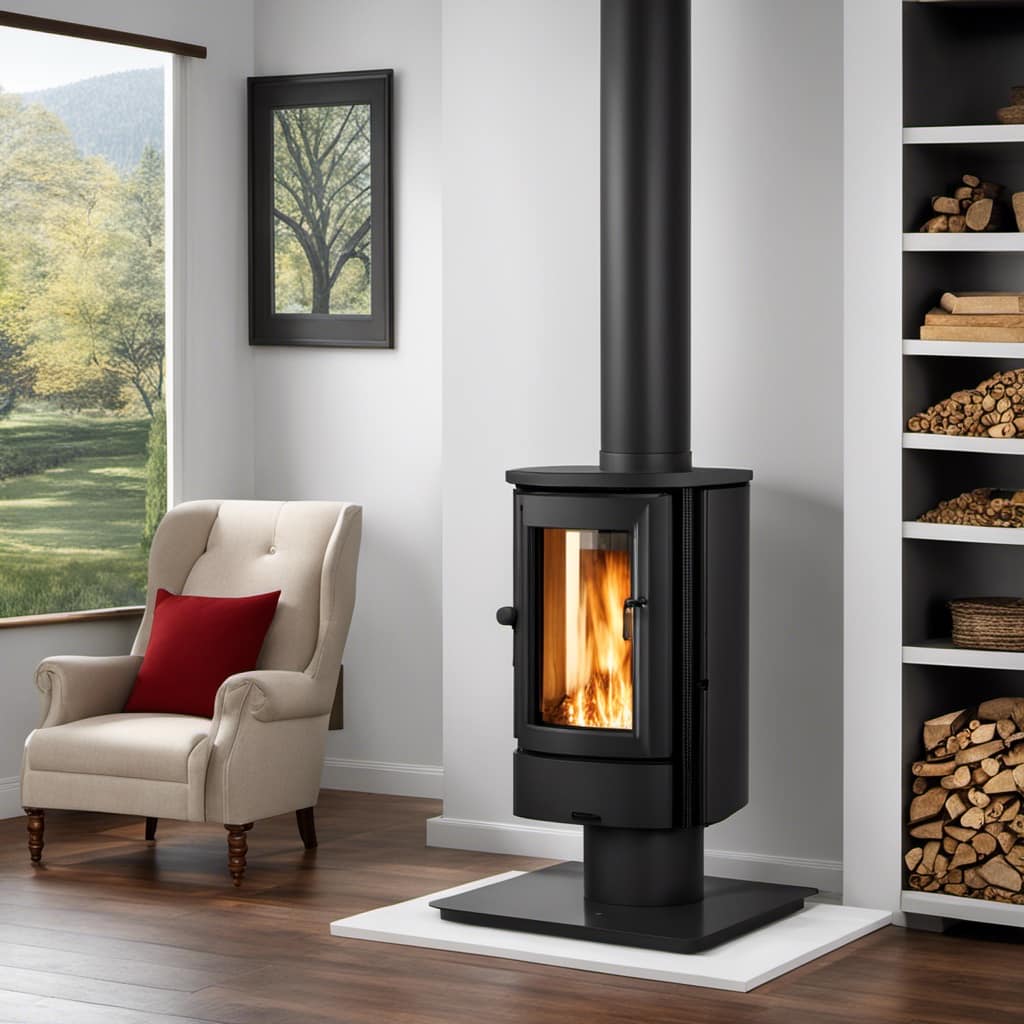
This statistic highlights the importance of taking safety precautions when using a wood stove, such as keeping flammable objects at a safe distance and using protective barriers to prevent burns.
Understanding and managing external wood stove heat is crucial for a safe and enjoyable experience.
Growing up surrounded by the vast beauty of nature, Sierra was always drawn to the call of the wild. While others sought the comfort of the familiar, she ventured out, embracing the unpredictable and finding stories in the heartbeat of nature.
At the epicenter of every remarkable venture lies a dynamic team—a fusion of diverse talents, visions, and passions. The essence of Best Small Wood Stoves is crafted and refined by such a trio: Sierra, Logan, and Terra. Their collective expertise has transformed the platform into a leading authority on small wood stoves, radiating warmth and knowledge in equal measure.




